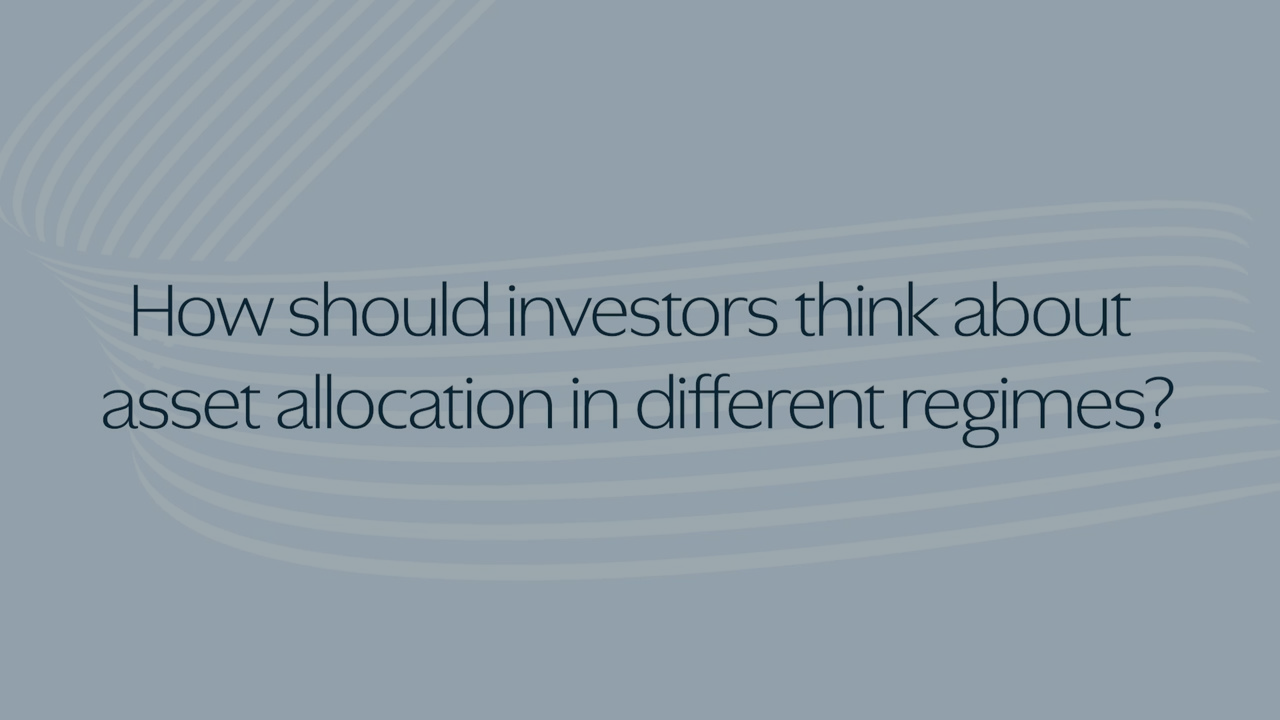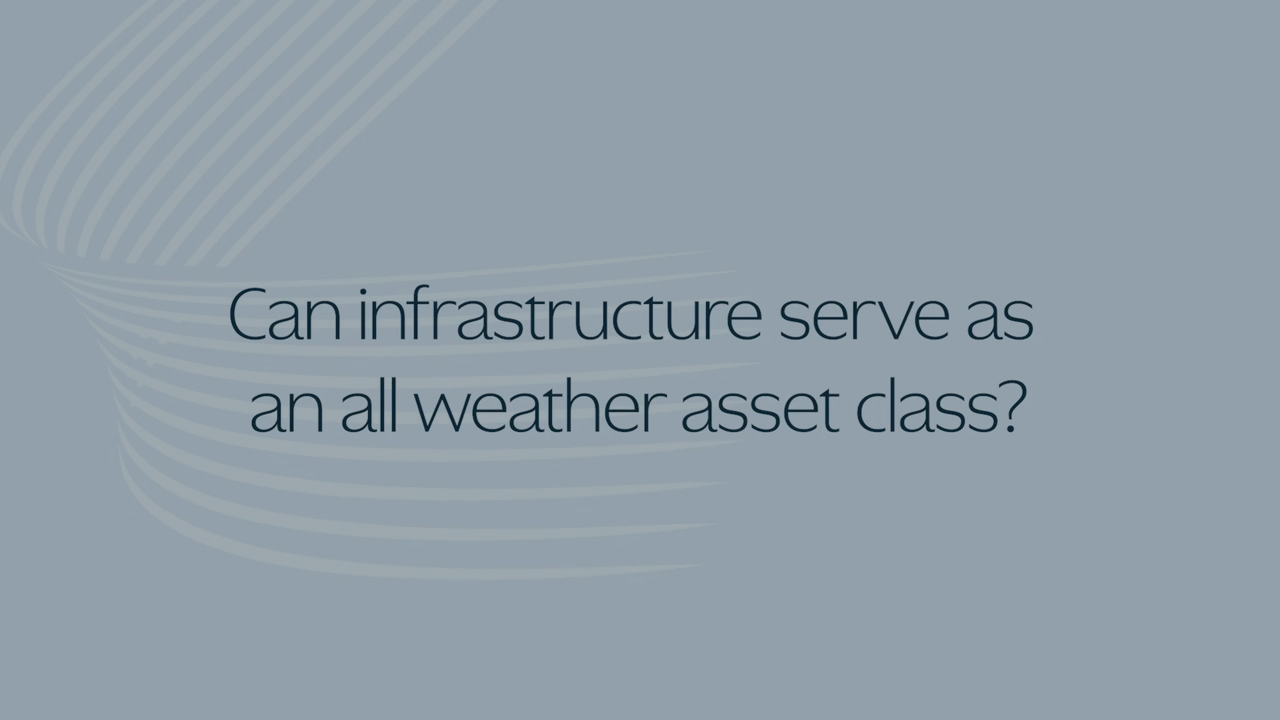Infrastructure has become a favored asset class in recent years given its outperformance in high-volatility periods like 2022 and its overall ability to provide alpha, yield, an inflation hedge, and a cushion against economic shocks. Our research suggests that private infrastructure:
- Has historically demonstrated strong performance relative to other asset classes through the economic cycle ,
- Offers an effective hedge against inflation , as we saw in 2021-2023, but also delivers a robust cash yield in low-rate environments,
- Tends to exhibit relatively low volatility , particularly when broader markets are turbulent or dislocated,
- Provides diversification and complements broader portfolio allocations, and
- Has the potential to provide strong risk-adjusted returns .
Private infrastructure’s distinct characteristics are particularly salient in a new investment regime that is biased toward higher interest rate and inflation volatility. Yet, we find that relatively few individual investors have exposure to the asset class. KKR’s wealth-focused asset allocation models consider three potential investor goals: generating income, preserving capital, and boosting returns. Private infrastructure plays a role in achieving all three, with a minimum recommended allocation of 5% (Exhibit 1).
EXHIBIT 1: KKR’s Alternatives Enhanced Framework for Wealth

Private infrastructure can offer both the potential to earn outsized returns and mitigate risk due to its exposure to long-term growth trends through assets that are critical to everyday life. In addition to traditional sectors like utilities and conventional energy, the asset class includes businesses that are critical for long-term energy security (LNG, renewables, and circular economy businesses like energy-from-waste), the digital revolution (fiber optic networks, data centers, and telecom towers), onshoring across industries, and other fast-growing areas of the economy.
Below is some of our analysis on the role private infrastructure can play in investor portfolios.
Strong Performance Relative to Other Asset Classes through the Economic Cycle
Investing in infrastructure, by definition, means investing in the foundation of the evolving real economy. The necessity of infrastructure assets translates into steady cash flows and a degree of resilience when the economic winds are shifting.
Indeed, private infrastructure has historically performed well through the economic cycle. Over the past 10 years, private infrastructure has outperformed every asset class except private equity (Exhibit 2).
EXHIBIT 2: Total Returns by Asset Class (Last 10 Years Through 2Q24)

An Inflation Hedge that also Performs in Low-Rate Environments
Infrastructure has historically performed well in high inflation periods, but also has attributes that make it attractive when inflation and interest rates are low or falling.
An inflation-hedged asset is similar to a bond with a floating interest rate in that both the hedge and the floating rate become more valuable as inflation and rates rise. Private infrastructure assets are capital-intensive and have intrinsic value. If prices rise in the broader economy, the cost of replacing these assets, including labor, materials, and the cost of debt financing, will likely rise, too. This relationship between the value of hard assets and price movements provides a layer of protection against inflation. In addition, many infrastructure assets have explicit inflation linkages through contracts or regulation, such as regulated utilities or telecom towers that receive rate increases when the consumer price index (CPI) is rising.
Infrastructure’s inherent resistance to inflation, plus the essential nature of the underlying assets, helped it weather the recent high-rate and high-inflation period better than most other traditional inflation hedges during the steepest part of the recent inflationary cycle (Exhibit 3). Our house view is that inflation is likely to stay higher for longer given persistent fiscal deficits, supply chain shifts driven in part by heightened geopolitical tensions, the energy transition, and structural labor shortages.
EXHIBIT 3: Annualized Returns by Asset Class, 4Q2021 – 4Q2022

However, infrastructure does not necessarily suffer in a lower rate environment. Falling rates are typically favorable for equity investors across asset classes, as valuations tend to rise. On the margin, lower borrowing costs can also make constructing entirely new projects, or greenfield development, more attractive. Finally, the steady cash flows infrastructure assets generate tend to produce an attractive cash yield even when rates are low (Exhibit 4)
EXHIBIT 4: The Fed Funds Rate vs. Infrastructure’s Dividend Yield (%)

Lower Volatility even when Broader Markets Are Turbulent and Dislocated
Because infrastructure assets are typically essential to the economy and often have strong local market share, they have historically experienced lower volatility relative to other asset classes, without sacrificing returns (Exhibit 5). In fact, private infrastructure has provided resilient returns even in the largest down markets, particularly relative to other asset classes. This demonstrates the asset class’s ability to provide near-countercyclical performance in some cases and increasingly insulate portfolios from market shocks (Exhibit 6).
EXHIBIT 5: Asset Class Annual Return and Standard Deviation: 2004-2023

EXHIBIT 6: Average Quarterly Return 1 Year Prior To-And-During Recessions (2004-2024)

A Diversifier that Complements other Asset Classes
Given the combination of upside potential, inflation linkages, and insulation from broader volatility, private infrastructure has proven to be a strong diversifier as well. The asset class has low-to-moderate correlation to many other parts of the market (Exhibit 7).
EXHIBIT 7: Return Correlations by Asset Class

Potential for Stronger Risk-Adjusted Returns
Ultimately, the characteristics of infrastructure are such that adding it to a traditional 60/40 portfolio would have resulted historically in higher returns with less volatility (Exhibit 8). And clearly not all infrastructure is equal. As Exhibits 3, 6 and 7 demonstrate, private infrastructure has been a more effective inflation hedge, a better performer in turbulent markets, and a more effective diversifier compared to publicly traded infrastructure. Thus, adding private infrastructure would have produced better risk-adjusted returns than adding listed infrastructure.
EXHIBIT 8: Adding Infrastructure Expands the Efficient Frontier

We think the reason for these differences is that publicly traded infrastructure investments tend to be concentrated in conventional energy assets, which are susceptible to both economic growth trends and inflation. Private infrastructure tends to have more broad-based exposure across sub-sectors, including some that are much more difficult to access through the public markets.
A Potential Path Forward for Infrastructure in Investor Portfolios
As investors think about incorporating private infrastructure in their portfolios, we think it is helpful to consider its defensive characteristics under several different economic scenarios:
| If inflation remains under control and interest rates decline… | If inflation remains at current, elevated levels or rises significantly… | If macro volatility remains elevated or declines… |
| Yield becomes increasingly important to investors. | Private infrastructure provides an important inflation hedge. | Private infrastructure offers long-term, relatively predictable revenue streams with low-to-moderate correlation to other asset classes. |
| Private infrastructure investments benefit from a lower discount rate. |
As we speak to investors around the world, we hear their concerns about relatively high valuations and an increasing level of concentration in public equity markets. As they consider the varying risks associated with a volatile economic and geopolitical backdrop, they are looking for alternatives that can perform through the economic cycle. We believe private infrastructure can help address many of these concerns.










